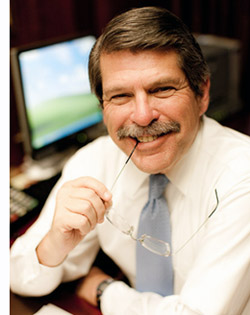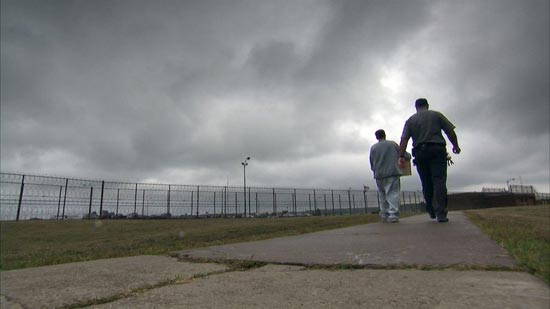County says it’s a prisoner of new parolee plan
February 2, 2010
L.A. County officials Tuesday criticized ongoing plans in Sacramento to trim the state prisons’ population and costs by shifting the care of thousands of former inmates to the county.
Department of Mental Health Director Marvin J. Southard ticked off a series of costly and potentially disruptive effects on county mental health care during the Board of Supervisors weekly meeting. In the earliest stages of the shift, Southard said, the county could end up shouldering anywhere between $8 million to $24 million.
Southard described three groups of inmates and parolees for whom the county could assume responsibility for their mental health care. They are:
- An estimated 1,200 parolees, already residing in L.A. County, whose state-based mental health treatment is about to disappear, throwing them on the county services.
- An unknown number of mentally ill inmates still in state prison who may be released in upcoming months as the state struggles to meet court orders to cut overcrowding in the 168,000 inmate system. This group is particularly worrisome to county officials because it’s expected to be large and coming directly from prison with their needs unclear. For now, a court has stayed their release.
- State mental hospital patients confined because they were judged insane or unfit to stand trial. So far, in the last year, only a small number have been sent to county hospitals as part of a release program. Some of those individuals, Southard said, have been taken to county hospitals in “midnight drop-offs,” an unacceptable practice that he said has been rectified.
The 1,200 new patients will add about 3 percent to the county’s mental health outpatient caseload, Southard said in an interview following the supervisors’ meeting. “It’s an additional 1,200 people added to an already rising patient population when resources are declining,” Southard said.
Supervisor Michael D. Antonovich, who led the questioning of Southard, called it “bizarre” and “irresponsible” that the state would force the county to provide mental health care for these individuals in difficult economic times without providing funding.
The shift of the parolees to county services is the byproduct of a plan that went into effect in late January to reduce the state’s prison population. Reclassifying more than 7,000 individuals to “Non-Revocable Parole” allows the state to reduce parolee supervision and shift care from Parole Outpatient Clinics, funded by the state, to county facilities.
The plan brought strong reactions from county officials.
County CEO William T Fujioka, for one, said the additional burden on the county amounted to an “unfunded mandate”—an all-too-common practice of the state requiring programs for which it will not pay.
State officials argue that the parolees they will reclassify—as well as prisoners scheduled for release—are non-violent offenders who pose little risk to the community. Matthew Cate, secretary of the California Department of Corrections and Rehabilitations, has said that the state could save as much as $500 million a year by lowering probation costs and providing earlier releases for some inmates.
Complicating the financial issues is a federal court order requiring California to dramatically reduce the prison population. The order arises from a federal lawsuit showing that inadequacies of the prison health care system violated inmates’ constitutional rights in the over-crowded institutions.
State prison officials promise to assist the county with the paperwork and referrals. But Southard said after the meeting that, despite good intentions, getting help is tough when “the state is in a shambles” because of retirements, furloughs and cutbacks. “They’re trying their best, but just scheduling meetings with people at the state who know the situation is difficult.”
New County Counsel Andrea Sheridan Ordin told supervisors that “the lack of coordination I think is one of the most disturbing portions of this at the moment.” She promised to look at “all types of [legal] remedies” to increase coordination and communication with the state.
All aboard Expo to the Westside
February 2, 2010
 This Thursday marks a turning point in the decades-long effort to bring mass rapid transit to the Westside of Los Angeles. That’s when I, along with my colleagues on the Exposition Metro Line Construction Authority Board, will cast a crucial vote on extending the Expo Line from Culver City to Santa Monica.
This Thursday marks a turning point in the decades-long effort to bring mass rapid transit to the Westside of Los Angeles. That’s when I, along with my colleagues on the Exposition Metro Line Construction Authority Board, will cast a crucial vote on extending the Expo Line from Culver City to Santa Monica.
I intend to vote yes, and here’s why.
The Westside has waited for decades to become part of the growing regional mass transit system of Los Angeles County. While transit lines have been built in downtown, Pasadena, Long Beach, the San Fernando Valley and along the Century Freeway, the Westside’s public transit system is exclusively made up of street buses. The Expo Line will give commuters who work and live in the western part of L.A. County an alternative to sitting in their cars for up to 3 to 4 hours each day getting to and from work or school. For the first time since the legendary Red Car system was dismantled after World War II, the Westside will have mass rapid transit.
And Thursday’s vote is a key step to getting us there.
The Expo Board will consider the Final Environmental Impact Report (FEIR) for Phase 2 of the project, the section of the light rail that will run from Culver City to Santa Monica. We must approve the FEIR before we can award a design and construction contract for this long-awaited project. If approved, Phase 2 could begin some construction before the end of this year, with completion planned in 2015. The line’s ridership is estimated to be 64,000 a day by 2030.
The Expo Line in its entirety will connect downtown Los Angeles with Exposition Park/USC, Crenshaw, Culver City, Pico/Sepulveda, West Los Angeles and Santa Monica. The first phase, which runs between downtown and Culver City, is now under construction and working toward an opening next year.
The Expo Line has had its share of critics, with concerns raised about matters ranging from grade crossings, impact on neighborhoods and placement of the project’s maintenance yard to delays and noise during Phase 1 construction.
But I firmly believe that the FEIR has addressed these issues in great detail and that we can deliver a project that will reflect what our region wants and needs. Extensive analysis has been done to ensure that the Expo Line is built in a manner that is as respectful as possible of the communities through which it will run. New elevated grade separations have been recommended where appropriate. Those intersections include: Venice Boulevard, Bundy, Centinela, Pico-Gateway, Cloverfield/Olympic and Sawtelle. The remainder of the grade crossings will be at street level.
It’s significant to note that the overwhelming majority of the 9,000 comments received on the environmental impact report have been positive. State Senator Fran Pavley and Assembly members Mike Feuer and Julia Brownley also have voiced their support for the project. And the cities of Los Angeles, Culver City and Santa Monica have partnered with Expo to build it.
The $1.5 billion Expo Line is being funded largely through the Measure R half-cent sales tax that was approved by county voters in 2008. The project, coupled with the extension of the subway westward, also partially funded through Measure R, will bring much-needed mass rapid transit to the Westside.
All of us have waited a long time for this moment. Building the Expo Line and extending the subway to the Westside are among the reasons I helped write Measure R and fought so hard to get it passed. An effective rapid transit system will improve our quality of life. System users will save time and money while reducing wear and tear on body and soul.
Come and join us at the Hall of Administration at 2 p.m. Thursday, and let’s get this train moving.
Posted 4-19-10











 Check for the latest closure information
Check for the latest closure information








